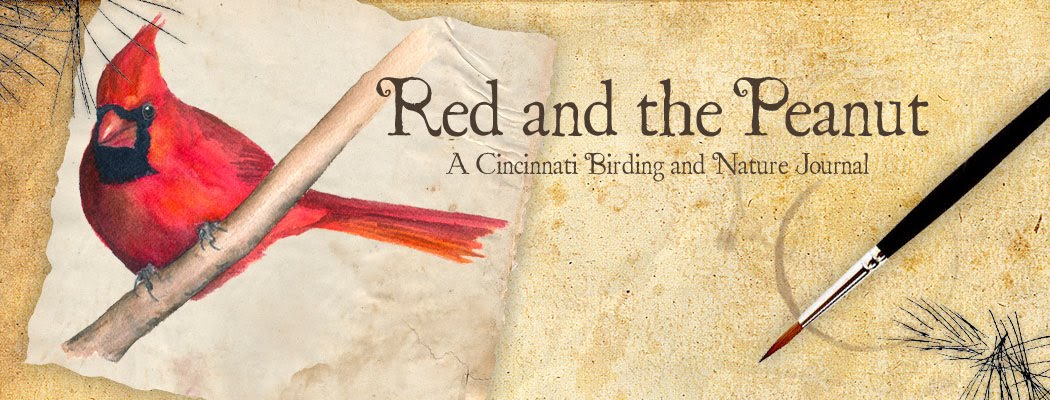This plant has so much to offer--striking blue-purple flowers, interesting striped patterns, and strangely shaped petals!

Great Blue Lobelia flowers are made up of two petals. The upper petal (lip) splits into two lobes (which remind me of rabbit ears), and the lower petal is striped with white, and splits into three lobes...
The leaves of Great Blue Lobelia are lance-like and pointed and can be 2-6" long, growing alternate along the stem. The plants grow 1-3' high, preferring wet woodland edges, moist thickets, and swamps. "(Newcomb's Wildflower Guide," by Lawrence Newcomb, and "Wildflowers of Ohio" by Stan Tekiela).

...tall spikes of Great Blue Lobelia push through grasses and other plants bordering the Little Miami River.
Great Blue Lobelia as a medicinal herb...
I didn't know much about lobelia and its history, so I thought I'd take a look. I found tons of references in books and on the Internet about its medicinal uses through the years. The most repeated entries referred to its name. Native Americans, especially the Iroquois, used this plant to treat syphilis. Settlers sent it back to Europe for use, but the physicians there had little luck with the plant and abandoned it. However, the Swedish botanist Carolus Linnaeus believed the claims of its efficacy and therefore labeled it Lobelia syphilitica (source: this info is repeated on many sites and is in several books, included a few of my wildflower guides, but Rosanna King has a detailed explanation of it here). King goes on to write that the failure in Europe is probably because Native Americans used lobelia with other herbs, such as cherry bark and New Jersey Tea (much of the information in King's article references "A Treasury of American Indian Herbs," by Virginia Scully. It looks like an interesting read. I might want to get it!)
It appears, however, that the plant's real fame came from Samuel Thomson (1769-1843), who at the age of four discovered its primary use, that of an emetic. This little story made me laugh... One day little Samuel stumbled across the beautiful plant and admired it, but his curiosity got the best of him, and he decided to pick it and have a taste. After chewing a few of the pods he promptly threw up. That alone is not funny...but what he did afterwards made me chuckle. From then on, he'd talk his friends into eating a pod or two just to watch them vomit (I can just see a little boy doing that)! Thomson went on to become a gifted healer, pushing aside the accepted methods of blood-letting and the application of mercury and other metals, and replacing them with the benefits of lobelia (source, King, here). Thomson also used the spice cayenne with lobelia, holding that cayenne stimulated the circulation and lobelia mildly sedated and relaxed the body (source, "Lobelia - Native American Wonder Herb," here).
Through the years lobelia was used as a cure-all herb and a catalyst herb working in conjunction with other herbs. It proved effective as an expectorant and an antispasmodic and was used to help people suffering from asthma. It's common names reflected its uses and included emetic weed, emetic herb, puke weed, vomit weed, vomit wort, gag root, eye-bright, asthma weed, wild tobacco (it has a nicotine-like alkaloid, lobeline), and Indian tobacco. It also had the common name of bladder pod, named after the shape of the seed pods (King).













